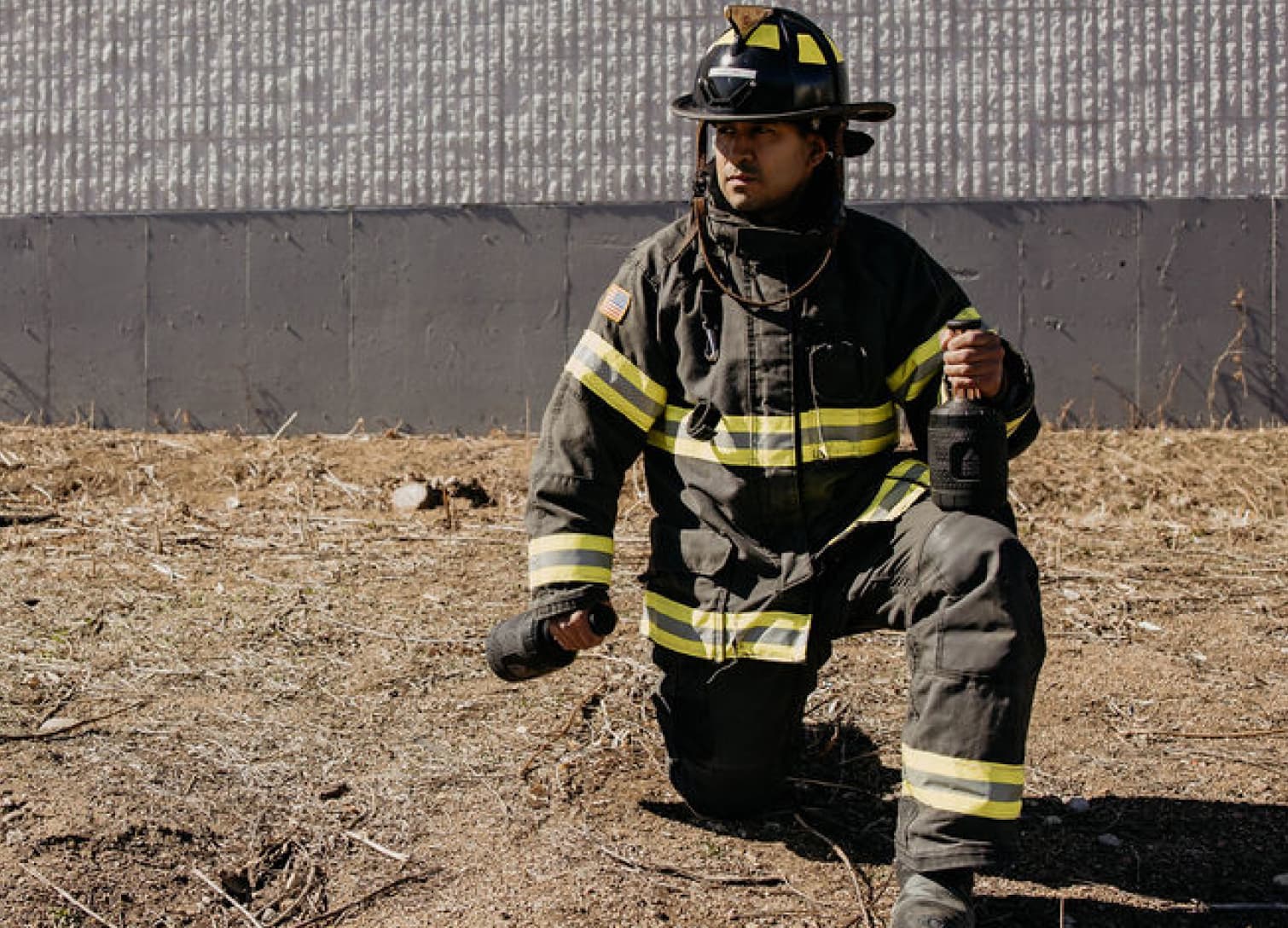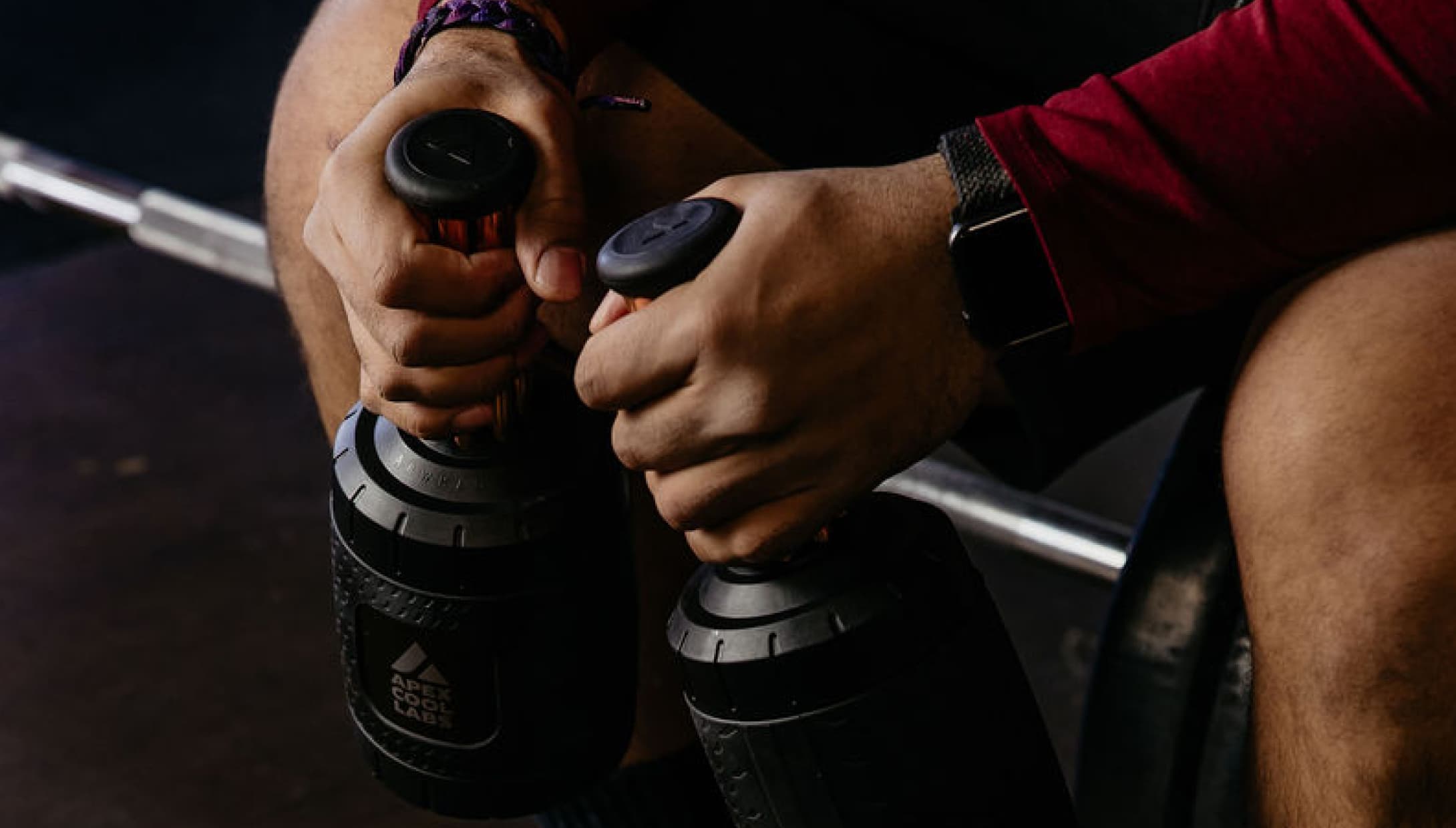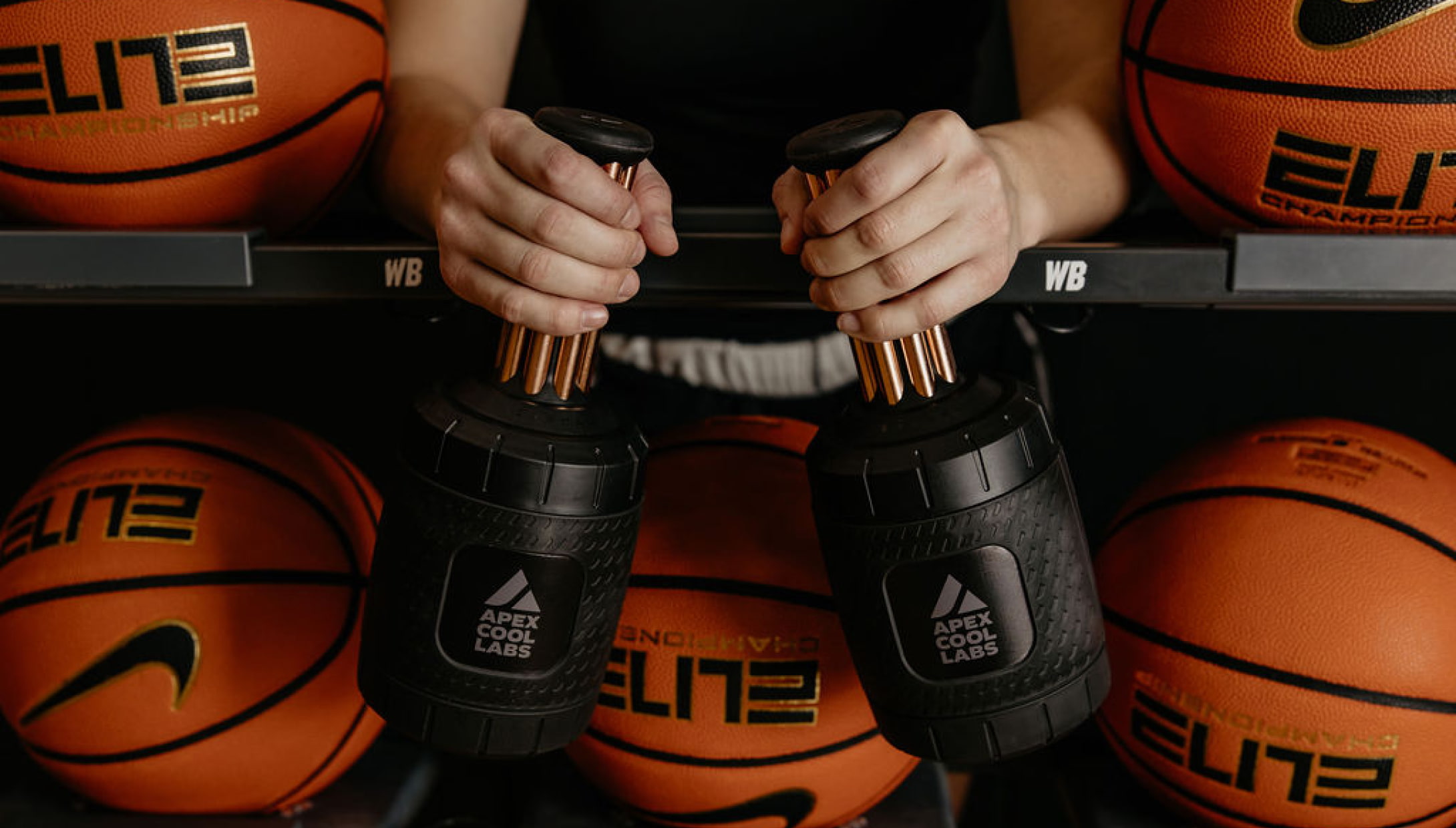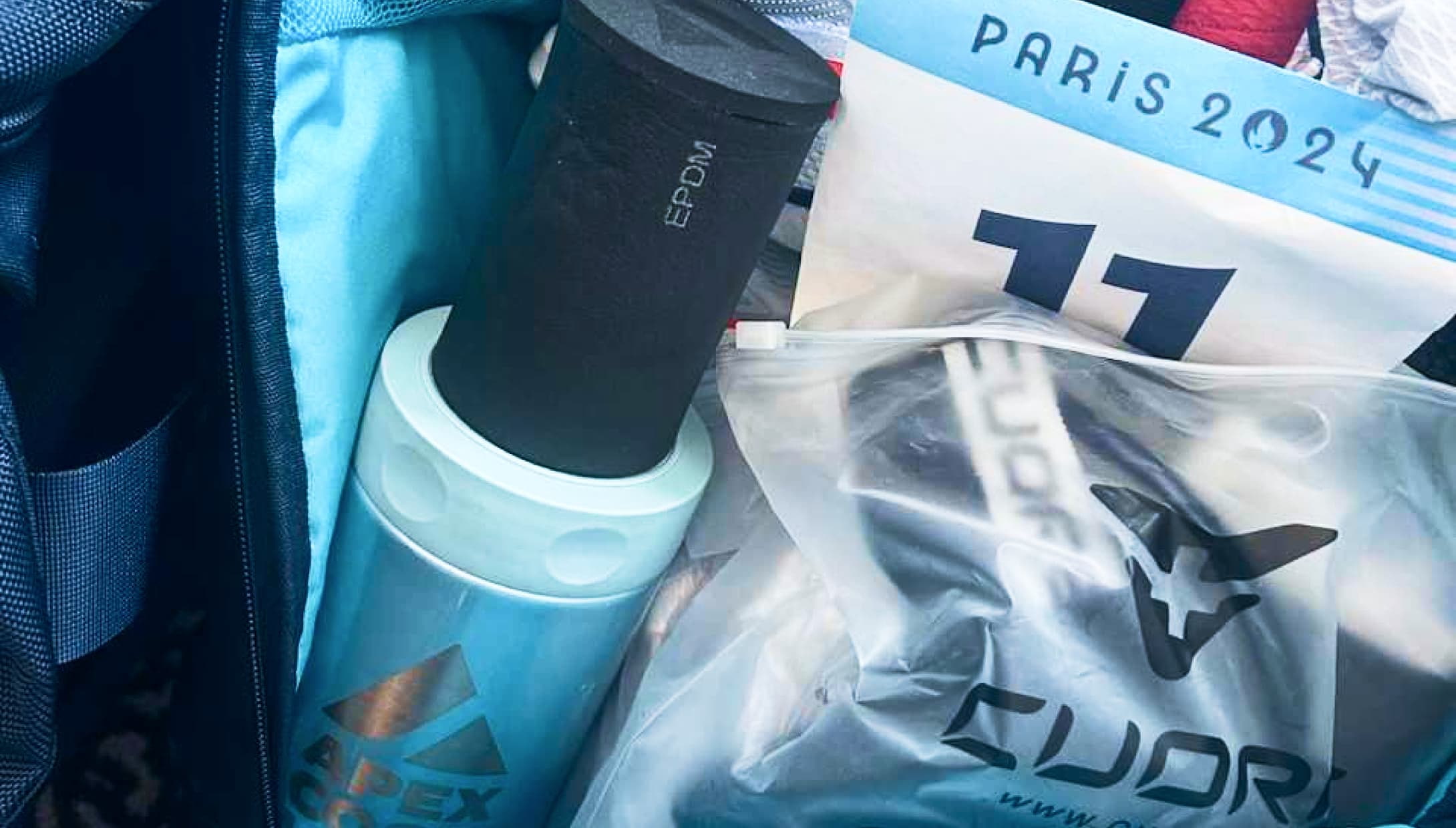Firefighters face extreme thermoregulatory challenges due to the demands of their work and the protective clothing required. One study found that 75% of firefighters experience heat-related illness (HRI) symptoms annually, and 5% experience HRI 20 times or more per year.
HRI is caused by an elevation of core body temperature. Heat illness dangerously progresses in three phases: heat cramps, heat exhaustion, and heat stroke. Symptoms of heat exhaustion include headache, dizziness, nausea, vomiting, confusion, and fainting. Left unmitigated, heat stress can quickly progress to life-threatening heat stroke.
Moreover, cardiac arrest is the leading cause of line of duty death for firefighters. Given that thermal stress causes cardiovascular strain, access to portable, reliable, and highly effective cooling methods can make a significant impact on the health and wellness of firefighters.
Unfortunately, cooling is complicated and energy intensive. Historically, there have not been practical solutions for quickly cooling down firefighters when on duty. However, recent innovations in body cooling technology have opened the door to compelling new protocols for the fire service.
The Key to Cooling the Body is Within Reach
Decades of research have demonstrated that one of the most effective methods of cooling the human body is via glabrous tissue found on the palms, soles of the feet, and cheeks. These skin areas contain specialized vasculature called arterio-venous anastomoses (AVAs), which are responsible for full body temperature control.
These special blood vessels are direct connections between arteries and veins with no capillary sections between them. In a review of the scientific literature on AVAs, the authors explain that the only transport function of AVAs is to move heat from the core body to the surface.
When we are cold, our AVAs constrict, keeping blood away from the limbs. When we are warm, they open up, allowing more blood to flow to the limbs and offload heat. This dilation and constriction of AVAs is controlled via nerve impulses sent from the hypothalamus.
When we are in warm environments, the AVAs experience twice the flow of blood compared to when we are at a neutral temperature. In one study of humans under thermal stress, researchers observed a six-fold increase in blood flow through the forearm.
You can see why physiologists call the hands and feet our radiators and evaporators!
Multiple studies have shown that cooling the palms of the hands is a highly effective mechanism for reducing thermal stress while increasing work capacity in hot conditions, even when individuals are wearing insulating gear. This technique works by quickly reducing core body temperature, which leads to accelerated heart rate recovery, decreased perspiration, and reduced electrolyte loss.
{{post-banner}}
How to Cool the Body via the Palms
To take advantage of this physiological phenomenon, three parameters are required:
- Correct Temperature: The cooling medium must be cool (not cold). For example, you cannot simply hold ice. The ideal temperature is between 50-60°F. Below 50°F, our AVAs vasoconstrict, preventing the necessary blood flow required to cool the body. Since heat flows from hot to cold, maintaining the largest thermal gradient possible without triggering vasoconstriction optimizes the cooling rate.
- Thermal Barrier Avoidance: When we hold an object or place our hands in cool water, we locally heat up the material in contact with our skin, forming a boundary layer that reduces heat flow. To maximize heat exchange, a cooling device must provide a mechanism for continuously removing heat and avoiding boundary layer formation.
- High Thermal Conductivity: To achieve the most pronounced cooling effect, hands should be holding a material with excellent thermal conductivity to move heat from the body. For example, copper is much more thermally conductive than an equivalent piece of plastic.
Palm Cooling Protocols for Heat Stress Mitigation
Two studies in particular provide insight into palm cooling protocols for heat stress mitigation relevant to the fire service.
Firefighter Cooling Study
In 2004, G A Selkirk et al. published Active Versus Passive Cooling During Work in Warm Environments While Wearing Firefighting Protective Clothing. In this study, the researchers demonstrated that forearm cooling attenuated core body temperature increases significantly better than passive cooling (resting in the shade) and misters. In fact, when cooling the forearms during 20-minute rest breaks, the firefighters were able to extend their work time by 60% before reaching the core body temperature cut off.
Although this study’s protocol was to submerge the entire forearm in cool water, the bulk of the cooling effect is occurring via the palms. While cooling the entire forearm will lead to a greater overall effect, such a protocol is generally not practical in incident conditions.
Palm Cooling for Heavily Insulated Heat-Stressed Individuals
In 2009, D A Grahn et al. published Heat Loss Through the Glabrous Skin Surfaces of Heavily Insulated, Heat-Stressed Individuals. In this study, participants wore mission oriented protective posture (MOPP) gear and walked on an incline treadmill in a 41.5°C room until they reached core temperatures of 39°C or higher.
Several cooling strategies were then tested, including cooling the hands, feet, and cheeks. Similar to the firefighter specific study, the researchers found that cooling glabrous skin significantly reduced core body temperature, heart rate, and perspiration rate compared to passive cooling. Core body temperature declined at the greatest rate in the first 20 minutes, but additional benefits were observed throughout the full 60 minute cooling period.
While palm cooling protocols for enhancing training performance align around a 2-3 minute cooling period, the research suggests that palm cooling durations should be at least 10 minutes when individuals are performing strenuous work in hot environments.
A Heat Stress Mitigation Solution for Incident Rehab
Until recently, implementing palm cooling protocols for firefighters has remained impractical due to the lack of portable and powerful palm cooling devices that can fit within incident rehab protocols.
Many departments have primarily relied on hydration, turnout gear removal, and shade to help firefighters cool down and accelerate heart rate recovery. But these methods cannot adequately mitigate the full effects of heat stress when wearing insulated gear.
Born out of a passion for advancing human performance, we created the Narwhals, a portable palm cooling device that has no moving parts, nothing to charge, and can last for hours even in hot environments.
Some of our first customers were NHL teams eager for tools to mitigate heat stress in heavily insulated players working to perform at their peak. Soon we learned about a similar, but even more critical use case among firefighters facing the constant threat of heat stress. The Narwhals are now in the hands of urban and wildland firefighters who are using them to mitigate heat stress and improve their training outcomes.
We are proud to provide a new tool for helping improve the health and wellness of the people who put their lives on the line for our communities everyday.










